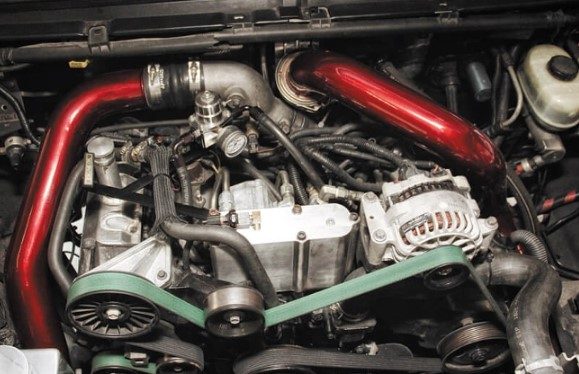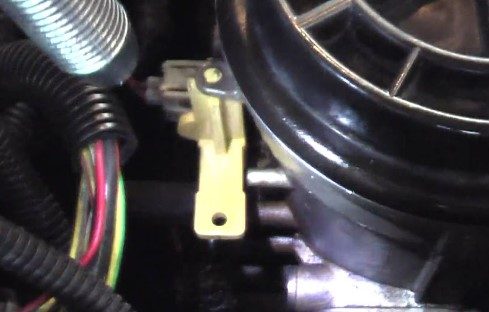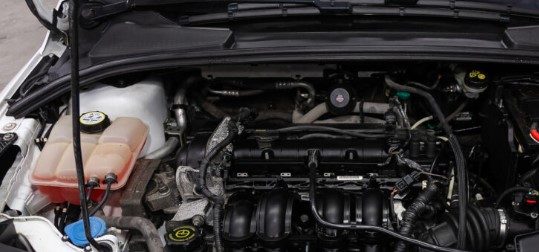The 7.3L Powerstroke Diesel engine was a tremendous success for Ford. Notably, after the modification in 1999, it has become one of their most popular engines and continues to be successful due to its powerful performance and reliability. The quality of the engine is highly regarded among owners, leading to a high level of customer satisfaction that has contributed greatly to its ongoing success.
In 2003, the 7.3 Powerstroke diesel engine experienced a major setback when it failed to fulfill certain emission standards despite its reputation as one of the most dependable engines in the market. This caused considerable frustration among users who had come to rely on this reliable engine for their transportation needs. Nevertheless, manufacturers have since worked hard to make sure that all subsequent models meet emissions standards and other important criteria.
The 7.3 Powerstroke was discontinued in the first quarter of 2003, due to a variety of common issues that had been brought to the attention of its manufacturer. In order to address these issues, it was decided that 7.3L would be replaced by 6.0L during the same year. This shift enabled the manufacturer to improve upon the quality and performance of their existing engine models while continuing to provide customers with reliable powertrain solutions for their vehicles.
The 7.3 Powerstroke has been a popular engine for many years, however, like all engines, it can suffer from failures due to various issues. Common causes of failure include fuel system issues such as injector or oil pump problems, turbocharger bearing failure, and coolant leaks. It is important to note that some year models are more reliable than others; those made between 1994-1997 were considered the most durable while 1998-2003 models had more problems with reliability. Therefore when looking to buy a vehicle powered by this engine it would be wise to avoid purchasing 1998-2003 model year vehicles and focus on earlier ones instead when available.
See also: 7.3 Powerstroke Idm Failure Symptoms
Lists 7.3 Powerstroke Years To Avoid

It is highly recommended that one should avoid purchasing a 7.3L Powerstroke within the model years 2001 to 2003. This is due to multiple engine and transmission issues, as well as various other problems that owners of this vehicle have experienced during these timeframes. Additionally, many of the parts needed for repair or maintenance are no longer available from manufacturers or suppliers making it difficult to find replacements when needed.
1. 2001 Powerstroke Problems

1998-1999 saw a heavy amount of changes, which have caused multiple problems since then. One such problem is the noise issue that has become increasingly prevalent in the years following these changes. It has been difficult to find solutions to this problem due to its complexity and the fact that it affects many areas of society. As such, various efforts have been made by authorities and individuals alike in an attempt to reduce or eliminate this issue with limited success.
The 7.3L split-shot injectors have been known to be the primary source of noise in this engine during these years, and surge difficulties on turbochargers from 2000 to 2003 are also widespread. As a result, it is highly recommended to avoid the Powerstroke 7.3l in 2001 due to its potential issues with both sound and performance.
Recommended article: P1316 code 7.3 Powerstroke
2. 2002 Powerstroke Problems

The 2002 Powerstroke 7.3l model has been seen to have numerous issues throughout the years from 2001-2003, such as the CPS and EBPV problems. It is best to avoid this particular model due to its tendency for mechanical failures and costly repairs that could result from these malfunctions.
In 2002, Ford made the decision to switch out the forged connecting rod with a Powdered Metal Rod (PMR). This change resulted in decreased engine performance as a consequence. The replacement of the traditional material with PMR was seen by many as an unwelcome decision that had been taken without due consideration for how it would affect overall performance.
3. 2003 Powerstroke Problems

Ford made the decision to replace its 7.3L engine in their 2003 model with a 6.0L due to California's noise standards, which necessitate lower emissions. This change took effect in the first quarter of the model year. Ford placed priority on fulfilling these noise standards and striving for environmental sustainability, leading them to make this consequential switch in their vehicle powertrain components.
Competing manufacturers had been developing trucks with comparable or superior performance capabilities, meaning that customers were not limited to purchasing the engine with an environmental regulation issue. In order to remain competitive in the market and provide customers with a quality product, it is important for buyers to consider all options before making a purchase decision; even if one option has an environmental regulation issue.
Description Of The Chronology Of The Events That Occurred 2001-2003

The Ford 7.3L was a huge success when it first released and quickly gained traction with young people. In 2002, the company decided to replace the original forged connecting rods with Powdered Metal Rods (PMR); while this could be seen as an improvement, PMRs are not designed to handle heavy-duty applications like diesel engines require and can only operate up to 450 horsepower. Furthermore, in order to meet noise regulations of the time, a catalytic converter had to be installed; some suggest that this affected engine performance negatively as well. As a result of these issues, production of the Powerstroke 7.3L ceased in 2003; for this reason anyone looking for one should avoid purchasing models from between 2001 and 2003.
See also: 2023 Ford F-250 Super Duty
What Makes This 7.3L Powerstroke Years Worth Avoiding? (Common Problems)

This particular engine has been known to experience a number of common failures, which can be attributed to a variety of causes. Looking into the issue more closely, it appears that some of the most prevalent causes of 7.3l Powerstroke failure include inadequate fuel delivery, clogged air filters, worn out injectors and pistons, and cooling system issues. Further research is needed in order to determine if other factors are also at play.
1. Failure Of The CPS (Camshaft Position Sensor)

CPS (Crankshaft Position Sensor) was a major problem and frequent area of failure in Powerstroke 7.3l engines. CPS is an electronic device that monitors the position of the crankshaft to ensure proper timing in diesel engines. This sensor had a tendency to malfunction or become defective, leading to engine stalling, rough idling, and other malfunctions which could ultimately result in costly repairs if not addressed quickly.
If a 2002 Powerstroke truck is exhibiting difficulty in starting or stalling while driving, the most likely cause is a faulty crank position sensor. Replacing the stock CPS is normally an effective and straightforward remedy for this problem. It should be noted that proper diagnostic tests must be conducted to ensure that other issues are not present and contributing to this matter.
2. Leak In The Fuel Filter Housing

The 7.3L Powerstroke is a reliable engine, however it has one minor failure point. This occurs when the fuel filter housing or fuel bowl made of aluminum develops cracks, leading to fuel leaks. This can lead to further damage to the engine if not addressed promptly and properly.
The heating element in the filter house can short out, resulting in a no-start condition. Further, due to wear and tear over time, the plastic cap on the filter house may become cracked and cause fuel leakage. Companies must take proactive steps to inspect these components regularly in order to prevent any issues from arising.
Other article: Full Accessory Power Active
3. Leaks In The Turbocharger Up-Pipe

The 7.3l Powerstroke is known to suffer from yet another failure point: a turbocharger leak in the up-pipes. This can lead to a decrease in boost and an increase in temperature of exhaust gas, both of which can greatly reduce the efficiency of this engine. It is essential that such leaks are identified and addressed as soon as possible to prevent further damage or performance issues.
4. EBPV Failure

The 2001-2003 Powerstroke 7.3L was notoriously prone to EBPV failure, which can have a detrimental effect on the engine's performance. The primary function of the EBPV, or exhaust back-pressure valve, is to regulate temperature and quickly return the engine’s operating temperature to its normal state. If your vehicle has encountered EBPV failure, then deleting the EVP is one commonly offered solution for resolving this issue.
Most vehicles manufactured within a certain year range were prone to having misfire or difficult start issues due to faulty electrical connections within the UVCH (under valve cover harness). If one takes a closer look, it is easy to see that these problems were largely caused by inadequate contact between glow plugs or injectors and the wiring. Thus, this kind of issue can be easily avoided if regular inspections are done on all electrical systems in order to detect any potential problems early on.
Between 1994 and 1997, Powerstrokes had two connections running into each bank, making troubleshooting the harness more time-consuming. However, from 1999 to 2003 this was changed so that only one connector ran into each bank, which made it easier for technicians to diagnose any problems with the wiring harness.
Recommended article: C0561-71 Traction Control Code
Which 7.3 Powerstroke Years Worth Buying?

The 1999-2000 model year is considered the pinnacle of Ford's 7.3L Powerstroke diesel engine, as there were substantial performance improvements from 1998 to early 1999. From 1994 to 1997, Ford had made steady progress in improving and innovating the 7.3L Powerstroke diesel engine; it became renowned for its excellent non-wastegate turbocharger, cam-driven mechanical lift pump and 4-speed automatic transmission amongst other features. In 1999, however, the manufacturer brought a huge shift with many new features being added such as an air-to-air intercooler and a new 4R110 Automatic Transmission alongside ZF 6 speed manual transmissions etc., making this period one of the best years for 7.3L Powerstroke engines.
Comparison Table
The table below demonstrates the differences in specs between two different 7.3l Powerstroke engines. This information is useful for those looking to compare and contrast engine performance over time, allowing them to make informed decisions regarding their vehicle's potential power output and fuel economy. Furthermore, by comparing these specs, one can get an idea of how advances in technology have helped improve the overall capabilities of this particular engine model over the years.
| The year 1994-1998 Specs | The year 1999 Specs |
| E40D 4-Speed Auto transmission | 4R110 Automatic Transmission |
| 5-Speed Manual Transmission | ZF-6 speed Manual transmissions |
| Horsepower 210-225 | Horsepower 225- 235 and 275 in 2003 |
| 425-450 lb-ft | 500-505 lb-ft |
| No Air-To-Air Intercooler | Air-To-Air Intercooler Added |
| Cam-driven mechanical lift pump | Upgraded to Electric lift pump |
| New truck Body style | Old Truck Body style |
| Single Shot Fuel Injector | All 1999 trucks receive split shot injectors. |
The 7.3L Powerstroke engine underwent dramatic changes from 1994 to 1997, and then again from 1999 onwards. The fuel injectors changed from single-shot HEUI or hydraulically actuated electronic unit injection types to larger split-shot injectors in 1999. Additionally, the 1995-1997 trucks used a cam-driven mechanical lift pump while the 1999-2003 trucks utilized an upgraded electric fuel pump. Moreover, alterations were made to the body style, transmission, intercooler as well as other parts and equipment of the engine.
It is clear why the 1999 or 2000 Years 7.3 Powerstroke is an attractive purchase for buyers looking for a reliable engine. This particular model offers great fuel economy, improved durability, and greater power when compared to its predecessors. Furthermore, it features updated technologies such as high-pressure oil systems that help keep the engine running strong and efficiently over time. Additionally, parts are generally easier to come by which reduces maintenance costs while increasing reliability and uptime.
In 1994, Navistar International released the 7.3L engine to great acclaim and it was widely considered one of the best diesel engines ever produced. Unfortunately, in 2001-2003 the engine developed problems and Ford had no choice but to discontinue its production.
Overall, it is clear that the 7.3 Powerstroke engine provides reliable performance for a wide range of year models. The best years for the 7.3 Powerstroke are 1999-2003 and 2006. It is recommended to avoid 2004-2005 models due to their higher rate of failure caused by injector issues or head gasket problems. This information can be helpful when considering which model year to purchase as well as understanding common reasons why a 7.3 Powerstroke may fail if not properly maintained.
Was this page helpful?


More important content about Ford
Ford F-250 Years To Avoid
Ford Focus Years To Avoid (List of Problematic Years)
2023 Ford F-250 Super Duty Price, Specs and Options
Full Accessory Power Active
Ford Explorer Sport Trac Years To Avoid
Tips and Advice
Porsche Cayenne Years To Avoid
Subaru Legacy Years To Avoid - 5 Worst Years
Pt Cruiser Years To Avoid
Use 5w30 instead of 0w20 - Advantages and Disadvantages
Tractor Dashboard Symbols And Meanings
Suzuki Sx4 Years To Avoid - 5 Worst Years